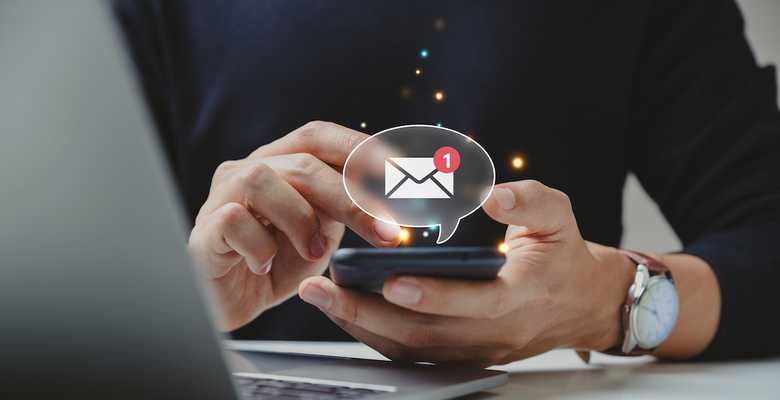Build an AI website in 60 seconds
AI generates your personalized website instantly with built-in scheduling, payments, email marketing, and more.
Start for free
Top tips to achieve inbox zero

Achieving inbox zero may seem like a lofty goal for many of us. It's the elusive concept of having an empty inbox, where every email has been read, responded to, or deleted. But what exactly is inbox zero, and why is it important to strive for it?
With email, communication has become faster and more efficient, but it has also become overwhelming and time-consuming. Inbox zero is a way to manage that overload and take control of your inbox. By achieving inbox zero, you'll feel a sense of satisfaction and accomplishment, and you'll have more time to focus on the more important tasks of your day.
However, inbox zero is not an easy feat, and it requires a rigorous email management strategy. In this post, we will explore the history of the concept, popular inbox zero methods, and the tools and resources you need to achieve it. So, buckle up and get ready to say goodbye to the clutter in your inbox.
What is inbox zero?
Inbox zero is a term used to describe the practice of maintaining an empty inbox by responding to, archiving, or deleting all incoming emails. Achieving inbox zero means having no emails currently in your inbox that require your attention or action. Inbox zero is not about avoiding emails or neglecting your duties, but rather, it is about enhancing productivity and minimizing stress by being more efficient and organized in managing your email.
The benefits of achieving inbox zero
Inbox zero can improve your productivity, reduce stress, and streamline your communications. When your inbox is cluttered and disorganized, it can be challenging to find important messages or prioritize tasks. Inbox zero allows you to keep track of what's important and ensure that nothing falls through the cracks. Additionally, by setting clear boundaries for email management, you can avoid feeling overwhelmed or stressed by a constant stream of incoming messages.
Importance of rigorous email management strategy
Achieving inbox zero requires a rigorous email management strategy that will help you organize, prioritize, and automate your inbox. With so many emails coming in daily, having a good system in place is essential to stay on top of things. This strategy will involve a combination of techniques such as filtering messages, prioritizing emails, using templates and canned responses, setting reminders, and archiving old messages.
By implementing these techniques, you can process your emails faster and more efficiently, giving you more time and energy for other tasks.
History of the concept
The idea of inbox zero is not just about having an empty inbox, but also about managing email efficiently. Inbox zero has been around for over a decade, but it gained popularity when Merlin Mann coined the term in 2006. In his blog, Mann discussed the need to have a rigorous email management strategy to deal with the overwhelming amount of emails. Inbox zero refers to the state of having an empty inbox by consistently processing all emails that come into your inbox.
Popular inbox zero methods: 3-21-0, one-touch method, etc.
There are several popular inbox zero methods that people have adopted to manage their emails effectively. One of them is the 3-21-0 method, which involves processing emails in batches of three, 21, or 0, depending on the priority of the email. The one-touch method, on the other hand, is about touching an email only once, either by replying, deleting, or archiving it. Different methods work for different people, and finding the right one for your needs is essential to achieve inbox zero.
Preparing for inbox zero
Achieving inbox zero requires preparation and organization. Before you start implementing inbox zero strategies and methods, it is crucial to declutter your inbox and prepare it for the process ahead.
Decluttering your inbox
The first step in preparing for inbox zero is to declutter your inbox. This means deleting irrelevant and outdated emails, archiving important ones, and organizing the remaining emails into folders and labels. By reducing the clutter in your inbox, you can focus on the essential emails that need your attention.
Setting up filters and labels
Filters and labels are essential tools in achieving inbox zero. You can set up filters to automatically direct specific emails to certain folders or labels based on the sender, subject, or keywords. This can save you time and help you prioritize the emails that need your attention.
Automating email responses and reminders
Another way to keep your inbox organized is to automate email responses and reminders. You can use tools like Boomerang or Inbox by Gmail to schedule emails to be sent later, or set reminders for emails that need to be followed up on. This can help you stay on top of your emails and avoid missing important deadlines or meetings.
Staying committed to the process
While preparing for inbox zero requires time and effort, it is essential to stay committed to the process. A rigorous email management strategy can help you achieve inbox zero and reduce stress and anxiety caused by a cluttered inbox. Once you have decluttered and organized your inbox, it is easier to maintain and stay on top of your emails and achieve a zero inbox on a regular basis.
Prioritizing emails and time management
The key to achieving inbox zero lies in prioritizing the emails in your inbox. This means deciding which emails are most important and require your immediate attention, and which can be responded to or deleted later. Set aside time every day to check your inbox, and prioritize the emails that need to be dealt with immediately.
Setting aside dedicated time for email management
One of the fastest ways to fill up your inbox is by letting your emails pile up without dealing with them promptly. Set aside dedicated time every day to manage your emails, and be consistent with this schedule. Whether it's 30 minutes in the morning or an hour at the end of the day, by regularly checking and managing your inbox, you'll be able to keep your inbox at zero.
Avoiding distractions while checking email
Emails can be a major source of distraction and derail your productivity. To avoid this, ensure that you are checking your emails at a time when you are not vulnerable to distractions. Avoid checking your emails first thing in the morning when you are still sleepy and prone to distractions. Instead, make sure to check your emails when you're alert and focused.
Dealing with urgent emails
Sometimes, despite your best efforts, you may receive an urgent email that disrupts your inbox zero strategy. The key to handling such emails is to stay calm and prioritize the importance of the situation. If it's an urgent email that demands your immediate attention, then respond accordingly. However, if it can wait, then respond later when you have time to focus on it. By prioritizing efficiently, you can still maintain an empty inbox, while also addressing urgent emails promptly and effectively.
Achieving inbox zero can seem like a daunting task; however, with the right strategies and a rigorous email management approach, it's absolutely doable. Stay on top of your emails, prioritize your workload, and make it a habit to manage your inbox every day. By following these steps, you'll be well on your way to an organized, efficient, and productive workday.
Tools and resources for inbox zero
One of the key reasons why achieving inbox zero is a challenge for most people is the lack of supportive tools. Fortunately, there are many solutions available to make email management easier and more efficient. Here are some of the most popular ones:
Inbox zero apps and plugins
Apps and plugins can help streamline your email management process and reduce the time you spend in your inbox. One of the most popular inbox zero apps is Inbox by Gmail, which can automatically categorize your emails into bundles and highlights the most important ones. Other helpful plugins include Unroll.me (for unsubscribing from unwanted emails), Boomerang (for scheduling email sends), and SaneBox (for filtering important emails and prioritizing the rest).
Best practices for using Gmail inbox zero method
Inbox by Gmail is a popular tool for inbox zero, but regardless of the email provider you use, there are some universal best practices you can incorporate. For example, creating filters and labels to organize your inbox, setting up canned responses for frequently asked questions, and using keyboard shortcuts to save time. You can also make use of features like snoozing emails for later, postponing non-urgent emails, and utilizing the archive and delete functions.
Other inbox zero resources
Finally, there are many other resources available for those who want to learn more about the inbox zero concept and its applications. Some of the most helpful ones include blogs like Lifehacker, which regularly feature inbox zero tips and suggestions. You can also read books like "Getting Things Done" by David Allen, which outlines a broader productivity strategy but has valuable insights on inbox zero. Additionally, online courses, webinars, and workshops can teach you specific skills and techniques to improve your email management.
Maintaining inbox zero
Now that you've achieved inbox zero, the next challenge is to maintain it. Here are some tips and tricks to make inbox zero a habit and keep your inbox clutter-free.
Tips for keeping your inbox at zero
To maintain inbox zero, it helps to have a morning routine that includes checking and organizing your emails at the same time every day. Schedule time in your calendar dedicated to email management, and stick to it. Use filters and labels to automatically sort and prioritize emails, and make sure to archive or delete non-essential emails as soon as possible. Respond and delegate emails promptly to avoid them piling up.
Handling unexpected or urgent emails
Even with the best planning and organization, unexpected or urgent emails can disrupt your inbox zero streak. The key is to have a system in place for dealing with them. One way is to set up an "urgent" label or filter that associates with specific senders or keywords. Another is to create a separate email address for urgent messages that require immediate attention. Whatever method you choose, make sure to revisit your inbox and reorganize it promptly after handling emergency situations.
Making inbox zero a habit
Last but not least, make inbox zero a habit by using the email strategies that work best for you and your team. Encourage everyone to follow the same email management practices, and keep refining your approach. With the right habits and practices in place, you can keep your inbox clean and prevent it from becoming a productivity drain.
Need help improving and scaling your business? B12 is the all-in-one platform that enables you to look professional online and reach new clients. Launch an online presence in 30 days or less that includes scheduling, payments, email marketing, and more. Get started for free.
Attract, win, and serve more clients
Receive helpful resources directly to your inbox to help you succeed online.
Draft your site in 60 seconds
Get an AI website made specifically for you that's free to launch.
Start for free ✨No credit card required
Spend less time on your website and more time growing your business
Let B12 set up your professional online presence with everything you need to attract, win, and serve clients.




